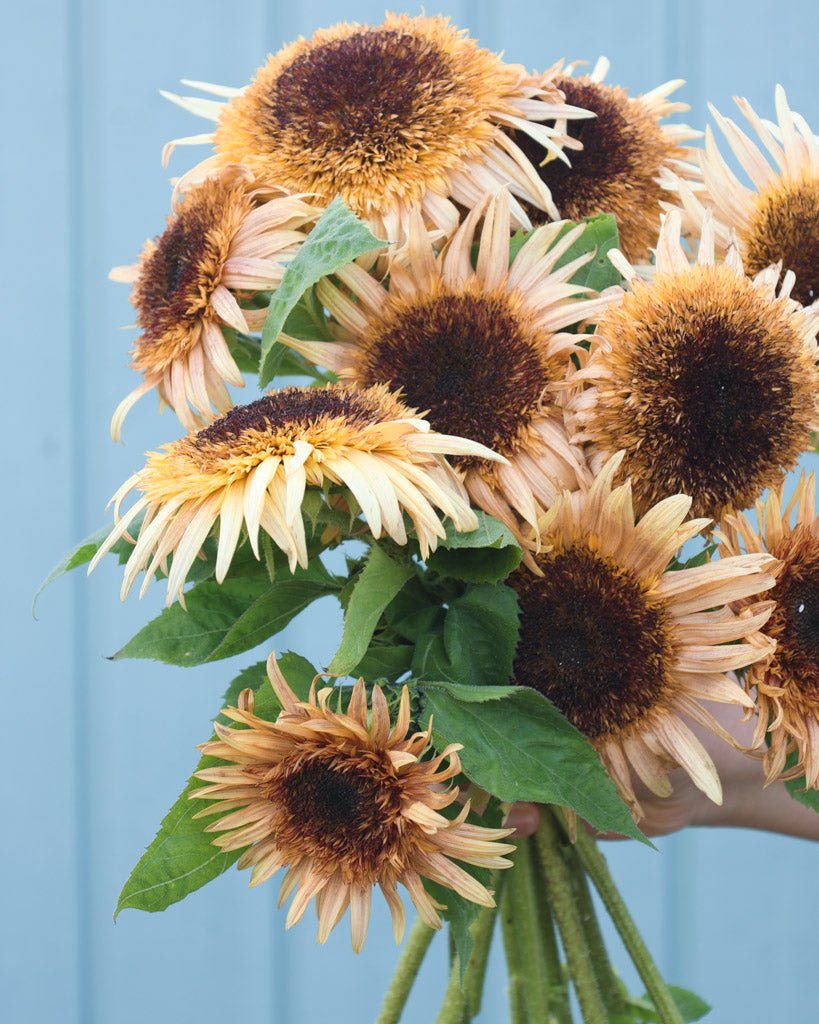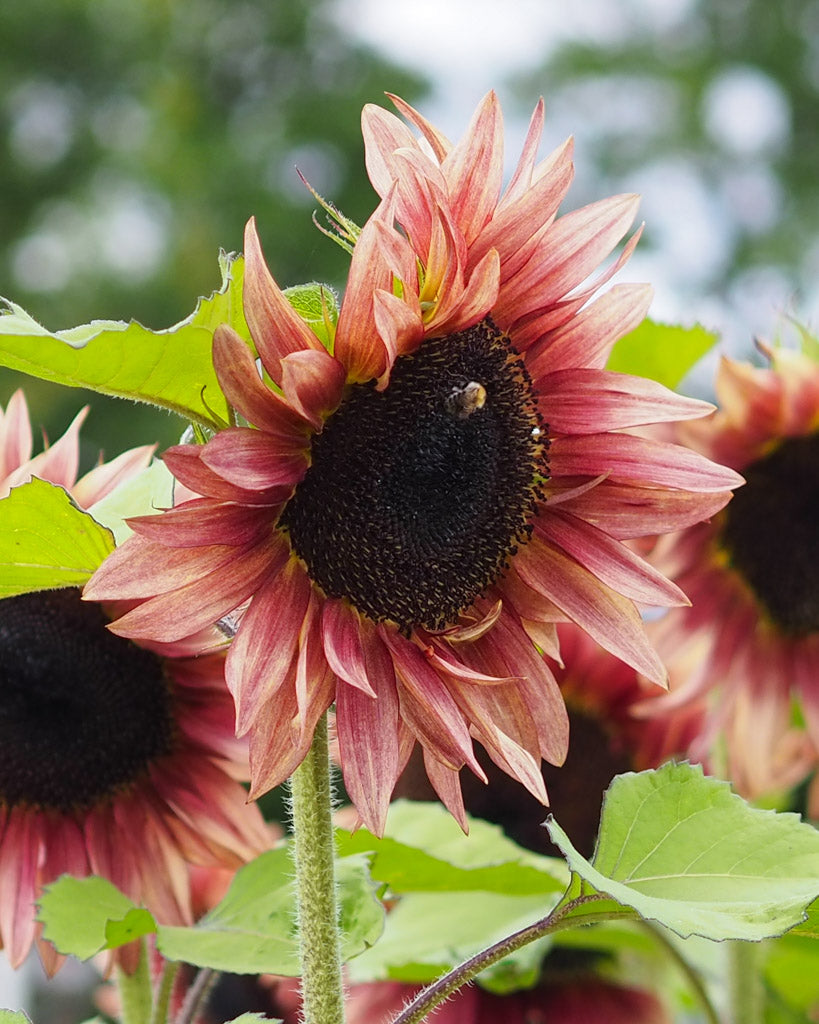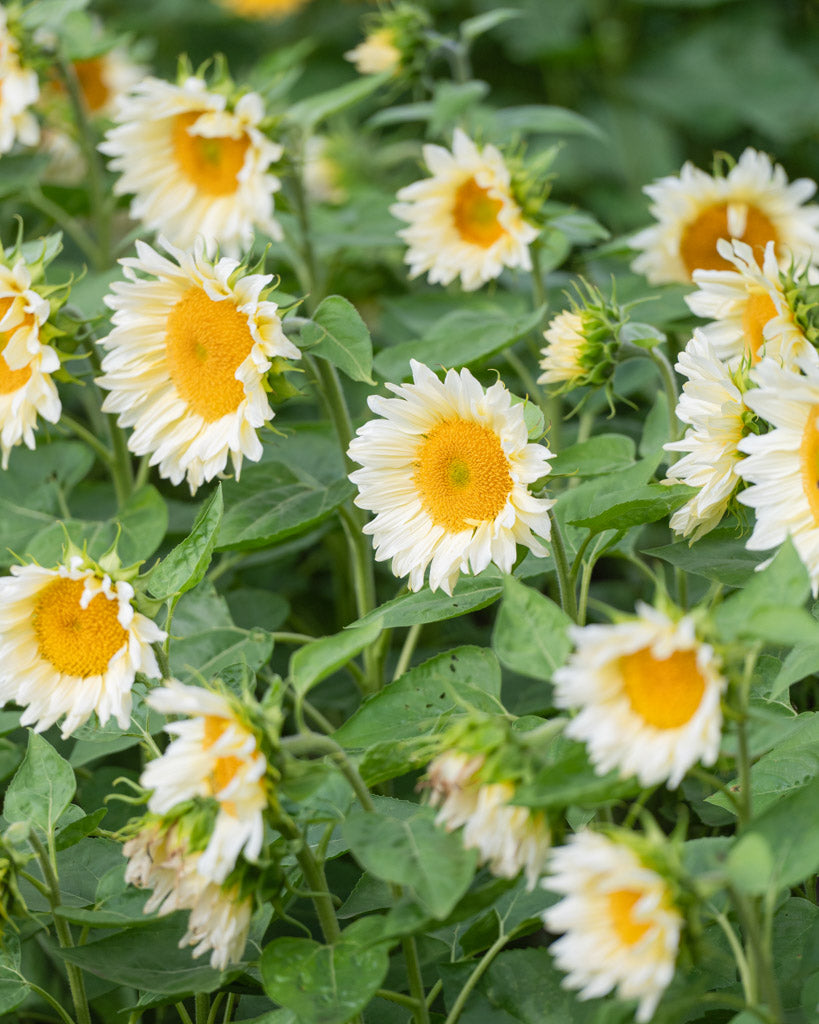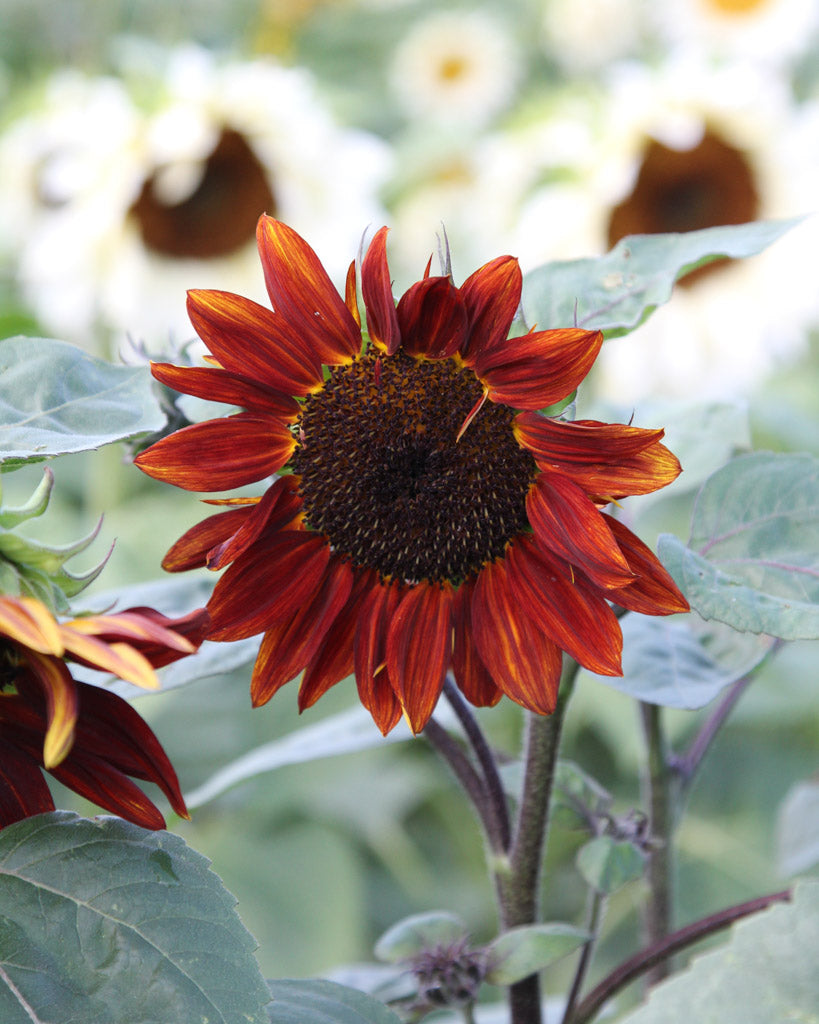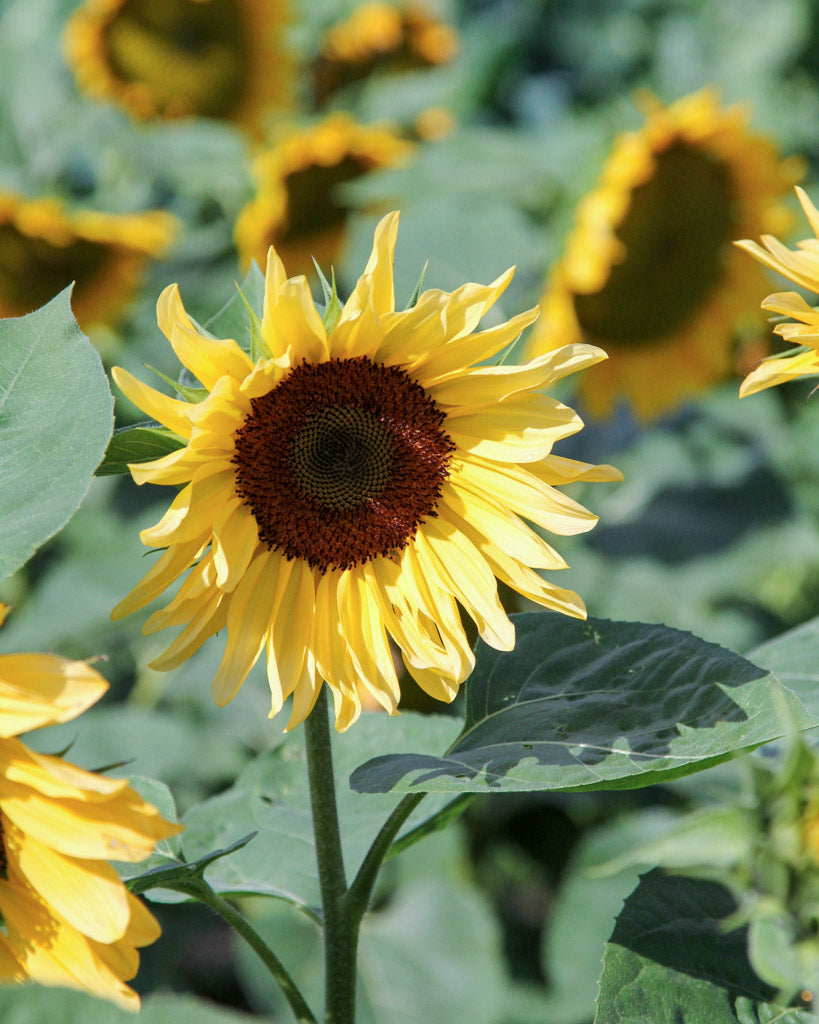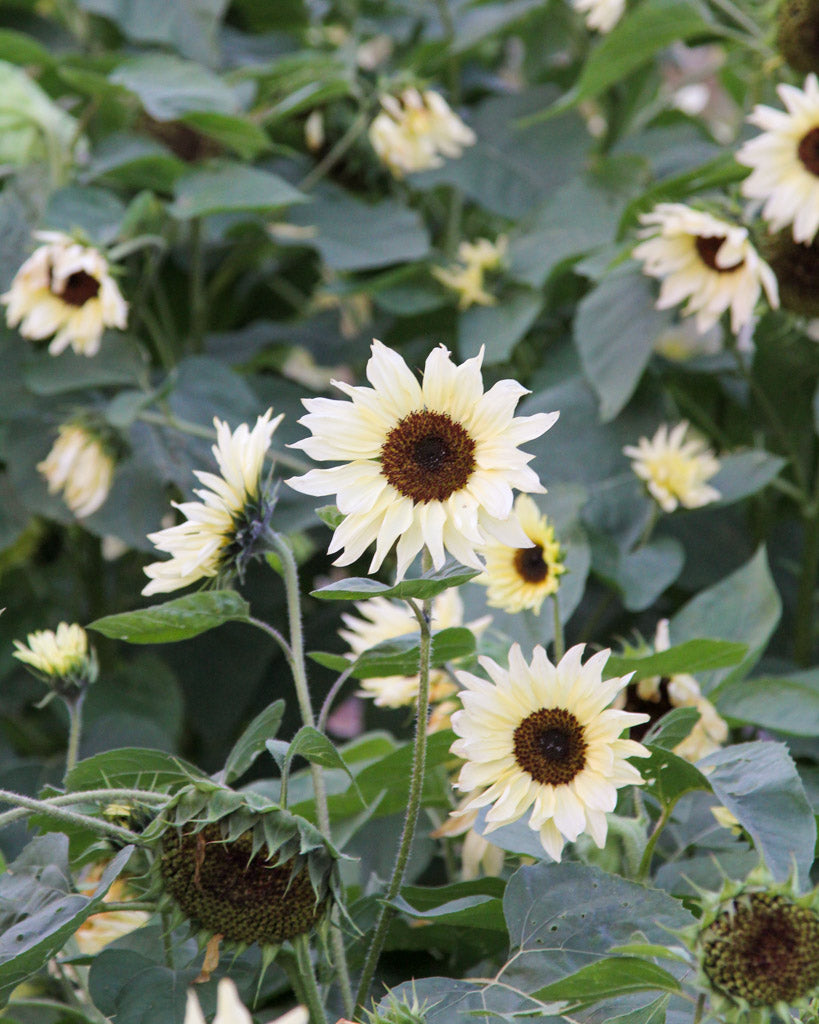Sunflower (Helianthus annuus)
The sunflower is probably THE summer flower par excellence. Not only do their blossoms resemble tiny suns, they are also extremely important as crops, as sunflower seeds and sunflower oil are widely used in cooking. Therefore, you should also protect your sunflowers from birds if you plan to use the seeds later – otherwise, you'll have created a popular food source in the fall!

Blossom:
The flowers are the characteristic feature of the sunflower. They are ray florets with a large, black-brown center, from which the seeds develop. The flowers are also available in double form.
Leaves:
Shaped like hearts, the leaves are large and rough in a dark marsh green.
Growth:
The stems are strong, hairy, and unbranched, with loose leaves and, depending on the variety, either one or more flowers at the end. Tall stems should be supported with stakes.
Flowering time:
July to October
Location:
As the name suggests, sunflowers require a location with as much sunlight as possible. When choosing a location, keep in mind that the flowers always face the sun: this is important to ensure you can see them from the front. The soil should be moderately fresh and nutrient-rich. Sunflowers don't tolerate waterlogging very well.
Care:
Very tall stems may need to be supported, otherwise ensure good water and nutrient supply.
Reproduction:
The most suitable method is direct sowing into the bed from April onwards.
Varieties:
'Evening Sun': red; about 2 meters
'Hohes Sonnengold': golden yellow, double; 1.50 meters
'Sunspot': golden yellow; 40 cm
'Giganteus': golden yellow; approx. 3 meters
TEXT: Carina Naeve


